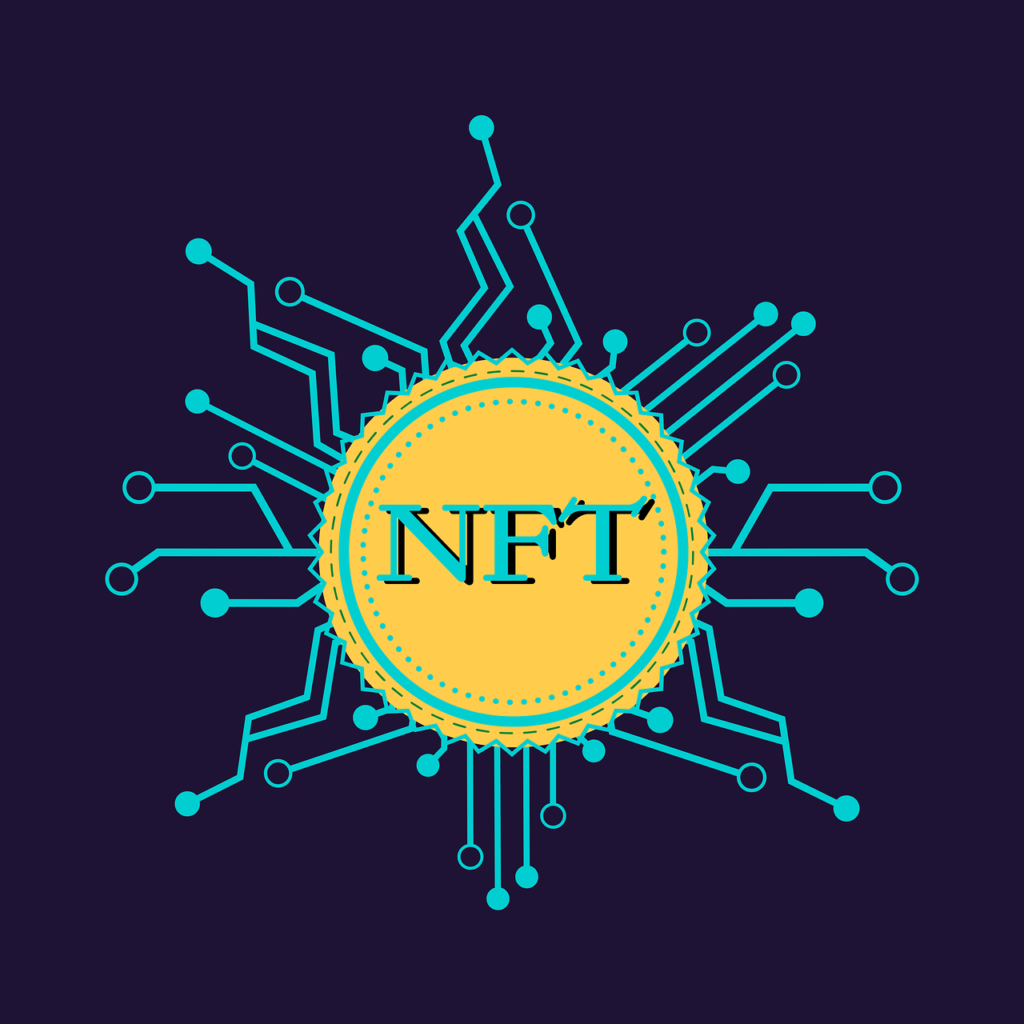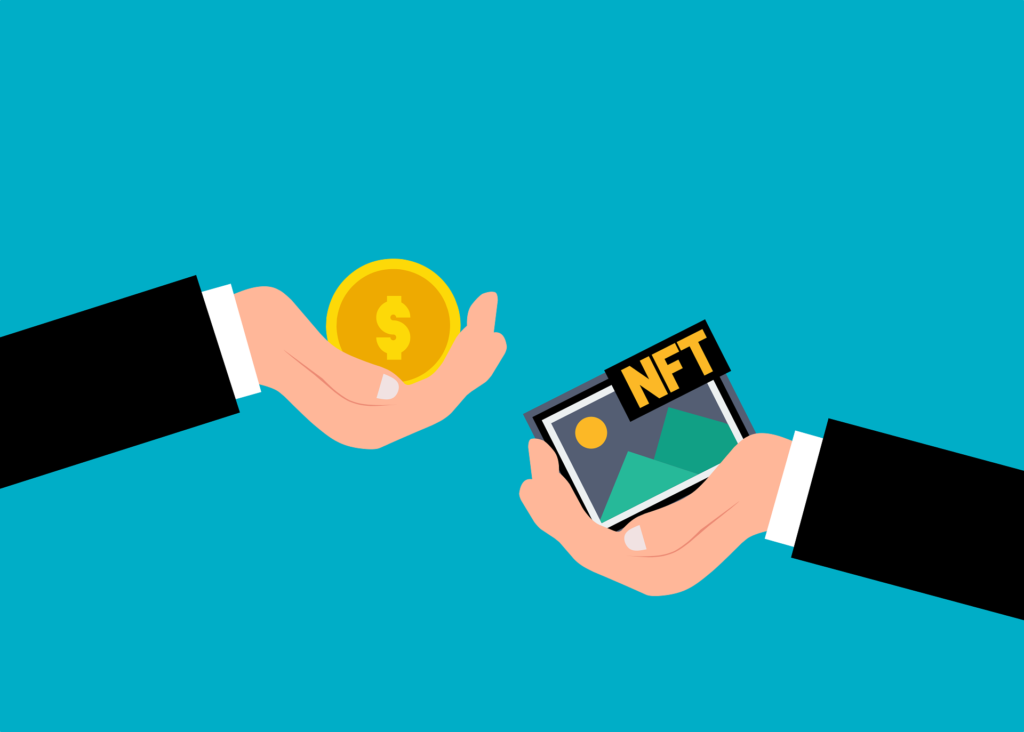
In this article, we will dive into the world of non-fungible tokens (NFTs) and explore their remarkable rise, especially within the art market. Beyond art, we will also discover the potential applications of NFTs in various industries. Buckle up as we embark on this exciting journey into the digital revolution!
Understanding NFTs
Non-fungible tokens, unlike cryptocurrencies, represent unique digital assets that can be bought, sold, and traded on blockchain platforms. They utilize the power of blockchain technology to ensure authenticity, traceability, and ownership of digital creations. This technology has opened up a new world of possibilities for creators and collectors alike.
The Impact on the Art Market
NFTs have caused a seismic shift in the art industry. Digital artists, who were often overlooked, are now finding recognition and new revenue streams through the sale of their NFT-based creations. High-profile artists have also embraced this trend, selling their unique digital artworks for astonishing sums. We’ll delve into the skyrocketing sales, viral success stories, and the transformative impact NFTs have had on artists and collectors.
Exploring Potential Applications
The influence of NFTs extends far beyond the art world. Let’s take a glimpse into how this groundbreaking technology is making waves in other industries:
- Gaming and Virtual Worlds: NFTs are revolutionizing the gaming landscape, allowing gamers to truly own their in-game assets. From virtual real estate to rare digital items, NFTs are reshaping the way we experience and trade within virtual worlds.
- Music and Entertainment: Artists and musicians are exploring NFTs as a means of connecting with fans and generating revenue. We’ll explore the potential of NFTs in ticketing, exclusive merchandise, and even fractional ownership of music rights.
- Real Estate and Tokenization: The concept of tokenizing physical assets, such as real estate, is gaining traction. NFTs offer a unique opportunity to divide property ownership into fractional shares, making investment more accessible and liquid.
- Collectibles and Beyond: NFTs have breathed new life into the world of collectibles. From digital trading cards to rare virtual items, NFTs are reshaping how we collect and trade items of value.
Looking to the Future
The potential of NFTs seems limitless. As technology evolves, we can expect further developments and applications. We’ll discuss possibilities such as NFTs in education and certification, social impact initiatives, and the role of NFTs in supporting philanthropic causes.
The future of NFTs is incredibly promising, with potential applications and innovations yet to be fully realized. From the art market to gaming, education, and beyond, NFTs will continue to reshape industries, democratize creativity, and redefine ownership in the digital age. As technology evolves, it is crucial to address challenges such as sustainability, inclusivity, and ethical considerations, ensuring that the potential of NFTs is harnessed in a responsible and equitable manner.
As we look forward, let us embrace the opportunities presented by NFTs, fostering a future where creators and collectors thrive, where creativity knows no bounds, and where the possibilities of digital ownership and engagement are truly limitless.

Conclusion
Non-fungible tokens have ushered in an exciting digital revolution, transforming the art market and paving the way for innovative applications across various industries. The world of NFTs offers endless opportunities for creators, collectors, and enthusiasts. However, it’s crucial to navigate the challenges and ethical considerations associated with this emerging technology to ensure its long-term sustainability and inclusivity.
Disclaimer: The information provided in this article is for educational and informational purposes only and should not be considered as financial or investment advice. Readers should conduct their own research and consult with professionals before making any investment decisions related to NFTs.
Frequently Asked Questions
How does an NFT make money?
Non-fungible tokens (NFTs) have opened up new avenues for creators to monetize their digital assets. Here are some ways in which NFTs can generate revenue:
Initial Sales: The primary way NFTs make money is through their initial sale. When an artist or creator mints and lists an NFT for sale on a platform, interested buyers can bid or purchase it using cryptocurrency. The price of an NFT can vary significantly based on factors such as the reputation of the creator, the demand for their work, and the perceived value of the asset.
Royalties: One of the unique features of NFTs is the ability to embed royalties into the smart contract associated with the token. Whenever an NFT is resold in the secondary market, the creator can earn a percentage of the resale price. This mechanism allows artists to benefit from the appreciation of their work over time and can create a recurring revenue stream.
Licensing and Merchandising: NFTs can serve as a gateway to licensing and merchandising opportunities. The ownership of an NFT can grant the holder certain rights, such as exclusive access to related content, special experiences, or even physical merchandise associated with the digital asset. Artists can collaborate with brands or license their NFTs for use in various commercial applications, generating additional income streams.
Tokenized Access and Membership: NFTs can be used to grant access to exclusive communities, events, or experiences. For example, an artist might create a limited edition NFT that grants holders access to private exhibitions, virtual meetups, or behind-the-scenes content. By offering unique perks and benefits, creators can monetize their NFTs by creating a sense of exclusivity and value for token holders.
Collaborations and Partnerships: Artists can collaborate with other creators, influencers, or brands to create joint NFT projects. By combining their fan bases and expertise, they can attract a larger audience and increase the potential for sales and exposure. Jointly created NFTs can be sold through auctions, with proceeds shared among the collaborators based on predefined terms.
Tokenized Services and Experiences: NFTs can represent access to specialized services or unique experiences. For instance, musicians may offer NFTs that provide holders with VIP access to concerts, backstage meetups, or private music lessons. Similarly, artists can offer personalized commissions or virtual art classes as NFTs, providing a more interactive and exclusive experience for their audience.
What are examples of NFTs?
Non-fungible tokens (NFTs) can represent a wide range of digital assets. Here are some examples of NFTs:
Digital Art: NFTs have gained significant popularity in the world of digital art. Artists can create and sell unique digital artworks as NFTs, providing proof of ownership and authenticity. These digital art NFTs can encompass various forms, including illustrations, paintings, animations, virtual reality (VR) experiences, and even generative art created by algorithms.
Collectibles: NFTs have revolutionized the world of collectibles, bringing digital ownership and scarcity to items that were previously intangible. Collectible NFTs can include digital trading cards, virtual pets, virtual fashion items, and other unique virtual assets that can be bought, sold, and traded on blockchain platforms.
Virtual Real Estate: NFTs have paved the way for the tokenization of virtual real estate. Virtual worlds and metaverses offer digital land that can be purchased as NFTs, allowing owners to build and monetize virtual structures, businesses, and experiences within these immersive environments.
Domain Names: NFTs can also represent domain names on decentralized platforms. These domain NFTs enable individuals to claim and trade unique blockchain-based website addresses, offering a new dimension to the traditional domain name system.
Music and Albums: Musicians and artists can release their music as NFTs, giving fans a unique opportunity to own limited editions, exclusive rights, or special perks related to the music. These music NFTs can include albums, singles, concert tickets, backstage access, and even opportunities for collaborations.
Virtual Identities and Avatars: NFTs can be used to represent digital identities and avatars in virtual worlds and gaming platforms. Users can customize and trade their virtual identities as NFTs, allowing for personalization, rarity, and ownership of unique virtual personas.
Virtual Goods and Items: NFTs are used to represent virtual goods and items within video games and virtual worlds. These can include weapons, armor, cosmetic items, virtual currencies, and other in-game assets that can be owned, bought, and sold by players on blockchain platforms.
Memorabilia and Sports Collectibles: NFTs have extended into the realm of sports, offering opportunities to own digital memorabilia and collectibles associated with athletes, teams, and iconic sports moments. These can include digital trading cards, game highlights, and exclusive access to sports events.
How to invest in NFTs?
Investing in NFTs (non-fungible tokens) can be an exciting and potentially lucrative venture. Here are some steps to help you get started:
Educate Yourself: Begin by learning about NFTs, their purpose, and their potential. Understand how they differ from cryptocurrencies like Bitcoin and Ethereum. Explore different platforms where NFTs are bought and sold, such as OpenSea, Rarible, and SuperRare.
Research and Select Niche: NFTs cover a wide range of digital assets, including artwork, collectibles, virtual real estate, and more. Choose a niche that interests you and conduct thorough research within that category. Study trends, historical sales, and the reputation of artists or creators.
Set a Budget: Determine the amount of money you’re willing to invest in NFTs. It’s important to establish a budget that aligns with your financial goals and risk tolerance. NFT prices can vary greatly, from a few dollars to millions, so be mindful of what you can afford to invest.
Acquire Cryptocurrency: To purchase NFTs, you’ll typically need to acquire cryptocurrency like Ether (ETH). Set up a digital wallet and purchase the required cryptocurrency from a reputable exchange. Ensure you understand the wallet’s security measures and backup your wallet information.
Choose a Marketplace: Select a platform where you’ll buy and sell NFTs. Popular marketplaces include OpenSea, Rarible, and NBA Top Shot. Evaluate factors like fees, user interface, reputation, and the types of NFTs available. Each marketplace has its own process for listing and selling NFTs.
Verify Authenticity: Before investing in an NFT, verify its authenticity and the legitimacy of the creator. Check for the artist’s reputation, their past works, and any relevant community engagement. Look for digital signatures, metadata, and other indicators of authenticity.
Due Diligence: Carefully evaluate each NFT you consider buying. Assess factors such as rarity, demand, the creator’s reputation, and potential for future value appreciation. Analyze the market, recent sales, and the overall sentiment surrounding the NFT and its community.
Timing and Patience: Timing is crucial in any investment. Consider market trends and cycles but avoid impulsively buying or selling based on short-term fluctuations. It’s often prudent to exercise patience and hold onto NFTs for longer periods to maximize potential returns.
Diversify Your Portfolio: As with any investment strategy, diversification is important. Avoid putting all your funds into a single NFT or category. Spread your investments across multiple NFTs, artists, or categories to mitigate risks and increase the likelihood of finding successful investments.
Stay Informed: Stay up to date with the latest news and developments in the NFT space. Monitor industry trends, new projects, and regulations that may impact the market. Engage with the NFT community, join forums, and follow reputable influencers to stay informed.
Remember that investing in NFTs carries risks, including price volatility, market uncertainties, and the potential for scams. It’s important to approach NFT investing with a thorough understanding of the market, a well-defined strategy, and a willingness to accept the inherent risks involved.
